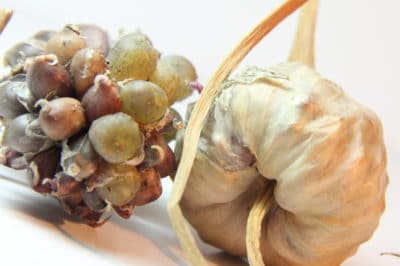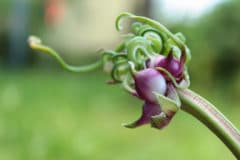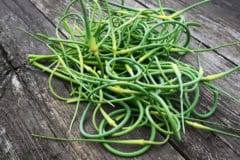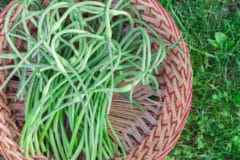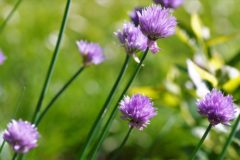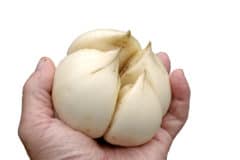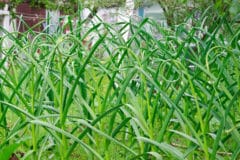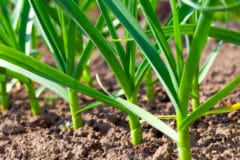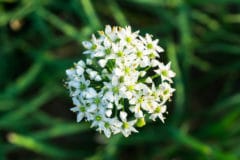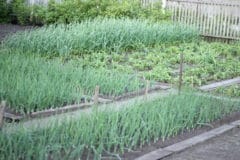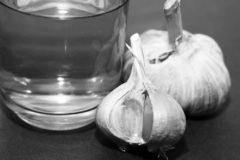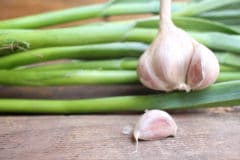Why Grow From Seed?
Garlic is typically grown from cloves. Problems inherent with this method are a build up of viruses in the plants and the risk of soil-borne diseases. It also means decreased genetic diversity because the cloves are clones. Using seed to produce new garlic plants can not only solve these problems but also increase vigor and yield from your home-grown garlic.
Of Flowers and Bulbils
Garlic is a member of the allium family, which also includes leeks, onions and shallots. Leeks and onions are generally propagated by seeds. Garlic in the wild and under cultivation reproduces primarily from cloves or tiny bulbs on the flower stalks called topsets, or bulbils. In order to grow seed, you must remove the bulbils.
Choosing Garlic for Seed
There is only one type of garlic that will produce seed – those in the hardneck group. Softnecks don’t send up a flower stalk. Purple Stripe and Marbled Purple Stripe varieties are the best choice. These are known to produce seed:
- Bai Pai Suan
- Brown Vesper
- Chesnok Red
- Darcheli
- Duganskij
- Floha
- Krasnodar White
- Metechi
- Mexican Red
Growing for Seed
While scapes (flower stalks) of garlic are usually removed to promote clove development, you should leave them in place. Continue to water the plants and provide fertilizer – this enhances top growth rather than clove development. This forces the plant into seed and bulbil production. You must remove the bulbils with tweezers, as they compete with the seeds. After several generations of growing from seeds, bulbils are less numerous.
Harvesting Seeds
As the seeds develop, the flowers will shrivel and begin to dry. Once the seeds become visible, they are ready to harvest. You can hold a container under the flower head and gently shake to dislodge ripe seed. Another option is to cut off the flower head and hold it over a piece of paper. Roll it between your fingers until the seeds fall onto the paper.
Growing the Seeds
Garlic seed needs a period of dormancy and exposure to cold. You can chill the seeds in the refrigerator for at least six weeks. Planting seeds in late winter offers best results. Plant the seeds in pots or the ground; cover with ¼ inch of soil. Water to keep soil barely moist, not wet. Viable seeds will usually germinate within two weeks.
